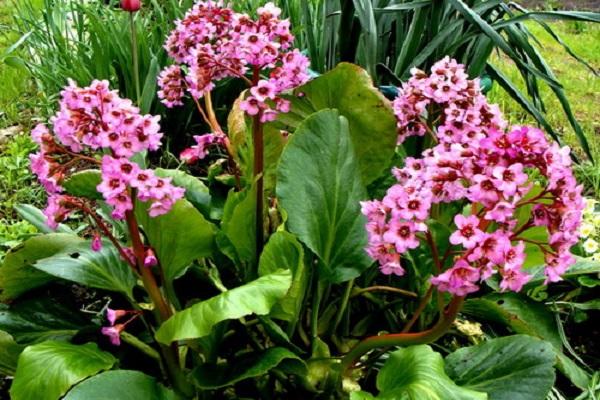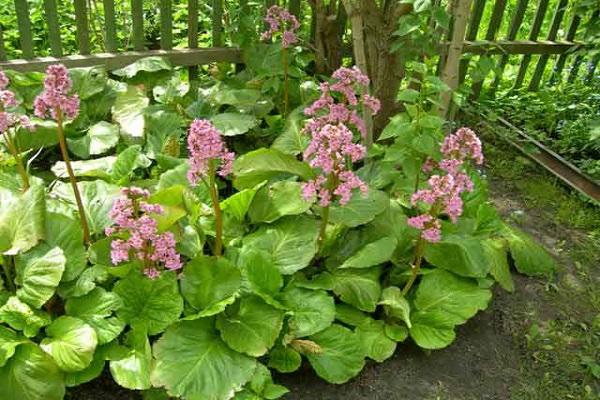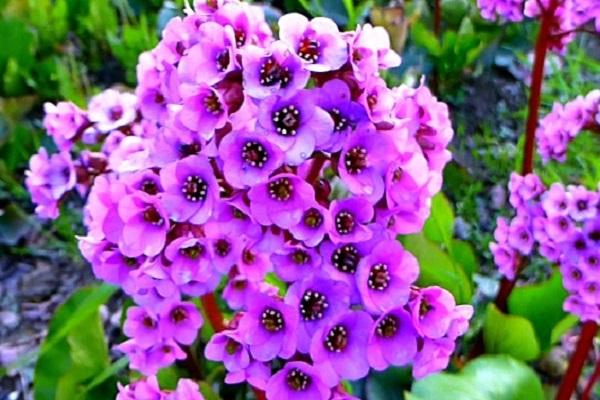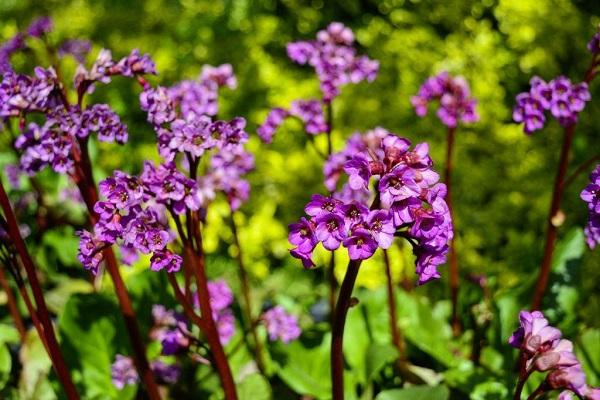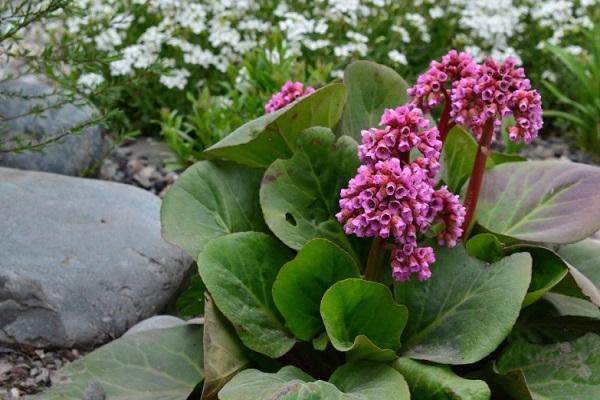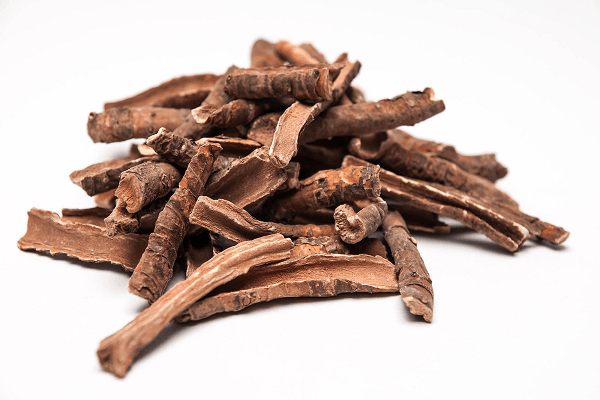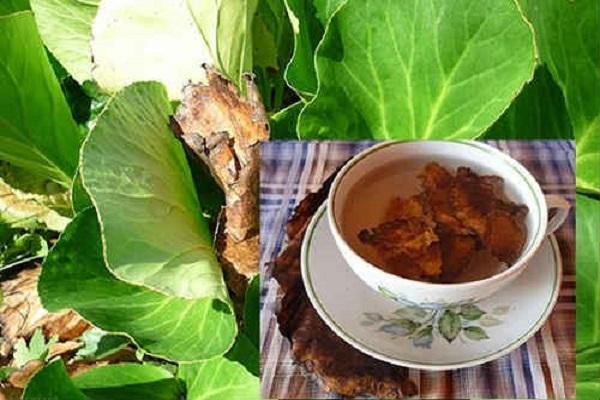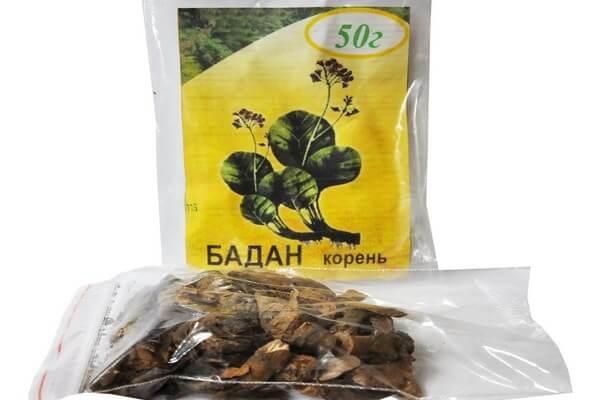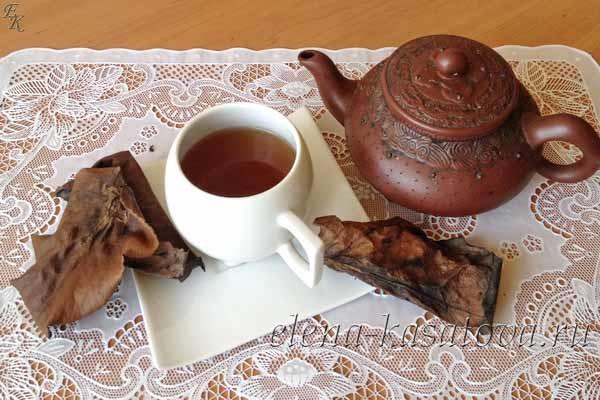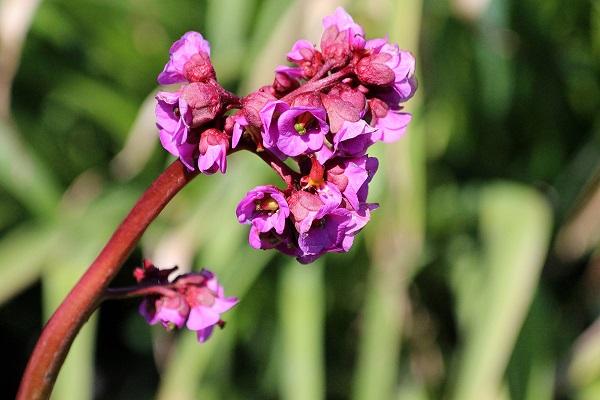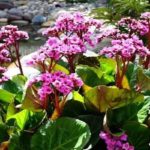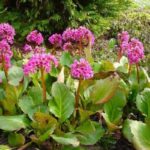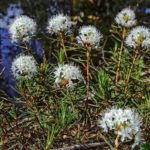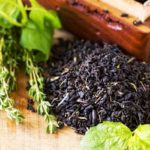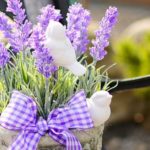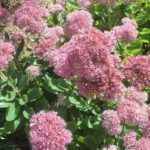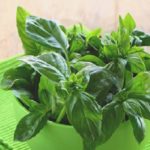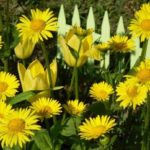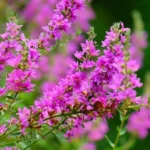Bergenia is one of the many species of the Saxifraga family, which is not only a beautiful ornamental crop, but also a raw material for the preparation of various traditional medicines. Treating many ailments, it, like any medicine, requires thoughtful and rational use. Therefore, in order for products made on its basis to bring the desired benefits, you need to know what medicinal properties and contraindications the bergenia has.
- Chemical composition of the plant
- The healing properties of bergenia for the human body
- For what diseases is it recommended to use?
- For the oral cavity
- For hemorrhoids
- For diarrhea
- For female diseases
- Normalization of the digestive organs
- Treatments for the respiratory system
- To strengthen blood vessels
- Against cough
- Preparation and drying of medicinal raw materials
- Collection and drying
- Storage
- How to prepare medicine from a plant and how to take it
- Root decoction
- Bergenia root extract
- Decoction of leaves
- Tea
- Dosage
- Harm and contraindications
Chemical composition of the plant
Bergenia thickleaf – a herbaceous crop with a perennial life cycle.
Its medicinal raw materials (leaves and thick large rhizomes) contain the following components:
- tannins;
- trace elements (manganese, iron);
- resinous substances;
- phytoncides;
- glycosides (arbutin and bergenin);
- essential oils;
- vitamin C;
- mono- and disaccharides (glucose and sucrose).
Also, both roots and leaves contain a lot of starch.
The beautiful flower of this plant does not have medicinal properties, since it does not contain substances beneficial to health.
The healing properties of bergenia for the human body
The widespread use of folk remedies made using this plant is due to a wide range of medicinal properties. Thanks to its composition rich in various beneficial substances for human health, products based on bergenia allow you to:
- Stop bleeding by increasing blood clotting.
- Relieve inflammation, prevent the formation of various tumors.
- Disinfect and disinfect wounds and various injuries.
- Relieve intense heat.
- Promote wound healing.
- Reduce high blood pressure.
- Relieve spasms of varying degrees.
- Strengthen the walls of blood vessels.
- Moderately increase your heart rate.
- Allow the body to resist negative environmental factors.
- Prevent stressful mental states, minimize the consequences of such a state.
- They have a pronounced antihypoxic effect, increasing the body’s resistance to oxygen deficiency.
- Strengthen the immune system.
In addition, decoctions and infusions made from the medicinal raw material of bergenia perfectly relieve various types of pain.
For what diseases is it recommended to use?
Folk remedies made from the medicinal raw material of bergenia are used to treat diseases of the oral cavity, respiratory tract, gynecological pathologies, digestive disorders, cough, and to strengthen the walls of the blood vessels of the body's circulatory system.
For the oral cavity
Tannins and vitamin C, which are part of the medicinal raw materials, make it possible to effectively use infusions from bergenia for the treatment of various dental diseases: stomatitis, increased bleeding of the gums, gingivitis.
For hemorrhoids
The beneficial tannins contained in bergenia can reduce the bleeding of hemorrhoids, allow them to be effectively disinfected, and reduce inflammatory processes in the rectum. Thanks to this effect, treatment of hemorrhoids proceeds in a shorter time, with minimal use of synthetic medications
For diarrhea
Bergenia tea, which has an antimicrobial effect, can effectively treat diarrhea in both adults and children. The substances contained in the plant not only normalize stool, but also help remove toxins from the body and destroy pathogenic microorganisms, which, in most cases, are the root cause of diarrhea.
For female diseases
Possessing a composition rich in useful substances, bergenia is used as a raw material for the preparation of folk remedies for the treatment of gynecological pathologies such as erosion (gradual resolution) of the cervix, heavy menstruation, and uterine bleeding. Also, a decoction prepared from bergenia is more than useful in the treatment of colpitis.
Normalization of the digestive organs
The enormous benefit of using various folk remedies made on the basis of bergenia is the normalization and improvement of the functioning of the digestive tract (stomach, intestines). Remedies prepared from the medicinal raw materials of this plant, when taken correctly, can improve stool, cure flatulence, eliminate constipation and cleanse the digestive tract of toxic substances.
Treatments for the respiratory system
The healing properties of folk remedies based on this plant also contribute to the treatment of diseases of the respiratory system such as pneumonia of various forms, tuberculosis, whooping cough, and intrapulmonary hemorrhage.
To strengthen blood vessels
The microelements contained in the plant make it possible to increase the thickness of the walls of blood vessels and increase their elasticity. This helps reduce the risk of thrombosis and internal bleeding, improves the condition of the cardiovascular system
Against cough
Infusions and tea from bergenia have a calming, anti-inflammatory and expectorant effect. This allows them to be used for various forms of cough, to reduce inflammation, and improve expectoration of sputum.
Preparation and drying of medicinal raw materials
All the beneficial properties of this plant are realized with the correct preparation of its medicinal raw materials.
Collection and drying
Collect medicinal raw materials (leaves and rhizomes) in the following periods:
- Rhizomes - harvested in mid-summer (late June, early July). The rhizomes are carefully dug out of the ground, freed from the basal fleshy leaves and peduncles, cleaned of soil residues, and washed under running cool water. The washed rhizomes are cut into long 20-centimeter pieces and laid out in a layer of 5 centimeters and dried at a temperature of 50 0C. Drying is carried out in special dryers or well-ventilated attics without access to direct sunlight.
- The leaves are harvested in early spring, when they turn brown after winter and dry out. Timely harvested leaves do not need additional drying.
After drying, the leaves and rhizomes are crushed.
Storage
Store medicinal raw materials in sealed bags or bags made of thick paper or canvas. For storage, choose cool places inaccessible to rodents, pets and small children. The shelf life of properly prepared medicinal raw materials is 4 years.
How to prepare medicine from a plant and how to take it
In folk medicine, decoctions, extracts, and the famous Altai tea are prepared from the medicinal raw material of bergenia.
Root decoction
A decoction of the dried rhizomes of this medicinal plant is prepared as follows:
- A tablespoon of medicinal raw materials from rhizomes is poured into a small container.
- Pour a glass of boiling water into the container.
- The container is heated in a water bath for 0.5 hours.
The resulting broth is allowed to cool to room temperature, after which it is diluted to the original amount with cold boiled water.
Bergenia root extract
An extract from crushed dried rhizomes is prepared by pouring two tablespoons of dry and finely ground bergenia rhizomes with 200 milliliters of water.Place the container with the resulting suspension on the fire. When half the volume of water has evaporated, the resulting extract is removed from the heat. The extract obtained in this way is used after it has cooled to room temperature, both for external and internal use.
Decoction of leaves
A tablespoon of medicinal raw material from leaves, cleared of grass and other foreign impurities, is poured with 250 milliliters of boiling water, after which its temperature is maintained in a water bath for 20-25 minutes. The finished broth is allowed to cool to the temperature of the room in which it is located.
Tea
The so-called Altai tea from this medicinal plant is prepared as follows:
- Two tablespoons of medicinal raw materials from dry leaves of the plant are poured into a mug.
- The container with medicinal raw materials is filled with boiling water.
- Cover the mug with a saucer and let the tea brew for about 15-20 minutes.
Drink tea after cooling slightly and without adding sugar. To improve the taste, a teaspoon of honey is often added to this drink.
Dosage
Folk remedies prepared from this medicinal plant have the following dosage:
- A decoction of rhizomes - 2 tablespoons, 3 times a day, before meals.
- A decoction of the leaves – 1-2 tablespoons, 3 times a day, before meals.
- Extract from rhizomes - 25-30 drops, no more than 3 times a day. When douching, the extract is diluted in 500 milliliters of boiled water.
- Tea - no more than 3 times a day.
When treating specific diseases and disorders, the dosage of a particular drug is first clarified with a doctor or specialist in the field of traditional medicine.
Harm and contraindications
Despite the large list of medicinal properties, bergenia-based products have a number of the following contraindications:
- Rapid heartbeat (arrhythmia).
- Low blood pressure (hypotension).
- Hypercoagulation of blood (increased ability of blood to clot).
- Frequent constipation.
- Allergic reactions to substances included in the chemical composition of the plant.
It is not recommended to use bergenia-based products for women during pregnancy and lactation..

